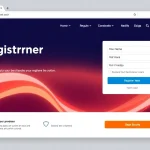Understanding Competitive Intelligence
Definition and Importance of Competitive Intelligence
Competitive intelligence (CI) is the practice of gathering and analyzing information about your competitors to gain a competitive edge in your industry. This isn’t about corporate espionage; it’s about operational insights that help a business make informed strategic decisions. By focusing on understanding what competitors are doing, organizations can anticipate market shifts, innovate their offerings, and adjust their strategies to maintain or gain market share. A competitive intelligence company can help businesses synthesize raw data into actionable strategies.
Common Methods Used by Competitive Intelligence Companies
There are numerous methods employed by competitive intelligence companies to attain valuable insights. These can be broadly categorized into primary and secondary research:
- Primary Research: This involves collecting data firsthand through interviews, surveys, or focus groups with industry experts and customers. It allows for tailored insights that are specific to the organization’s needs.
- Secondary Research: This method focuses on existing data across various platforms such as industry reports, financial statements, news articles, and social media. Secondary research is often less expensive and quickly accessible.
- Open Source Intelligence (OSINT): This involves utilizing publicly available resources to gather competitive insights, such as analytics tools to monitor competitors’ digital presence or press releases about their new products.
Key Benefits for Businesses
The value of implementing a competitive intelligence strategy cannot be overstated. Here are several key benefits:
- Informed Decision-Making: Having clear insights allows businesses to make strategic decisions rooted in market realities rather than guessing.
- Anticipating Market Trends: By monitoring competitors, businesses can identify trends that may affect their market and quickly adapt to stay relevant.
- Customer Understanding: Insights into competitor strategies can reveal customer preferences and behaviors, informing product development and marketing strategies.
- Opportunity Identification: CI can uncover gaps in the market that a business can exploit ahead of its competitors.
How to Leverage Competitive Intelligence
Strategies to Analyze Competitors Effectively
Once a business decides to invest in competitive intelligence, the next step is to analyze competitors effectively. Here are some strategies:
- SWOT Analysis: Assessing each competitor’s Strengths, Weaknesses, Opportunities, and Threats provides a holistic view of the competitive landscape.
- Benchmarking: This involves comparing specific metrics (like customer service, pricing models, and marketing strategies) against competitors to identify where improvements can be made.
- Continuous Monitoring: Competitive landscapes can shift rapidly, making it critical to set up continual monitoring systems for competitor activities.
Tools and Resources for Competitive Analysis
To streamline the competitive intelligence process, a range of tools and resources are available. These include:
- Social Listening Tools: Platforms like Hootsuite and Sprout Social allow businesses to monitor online conversations around their brand and competitors.
- Web Analytics Tools: Google Analytics provides insights into web traffic and user behavior, while tools such as SEMrush or Ahrefs can provide data on competitors’ online visibility.
- CRM Software: Customer relationships management tools often include analytics features that help understand customer behaviors and predict market shifts.
Case Studies of Success Stories
Understanding how some companies successfully leveraged competitive intelligence can guide others. A few notable examples are:
- Netflix: In its early days, Netflix utilized CI extensively to monitor consumer preferences and library offerings from competitors like Blockbuster, allowing it to pivot to a subscription model successfully.
- Coca-Cola: By employing data-driven insights about beverage trends globally, Coca-Cola developed products that cater to emerging consumer tastes, keeping their offerings relevant.
- Apple: Apple’s competitive analyses of smartphone features allowed it to innovate continuously and maintain a strong market position against rivals like Samsung.
Selecting the Right Competitive Intelligence Company
Criteria for Choosing a Competitive Intelligence Provider
When businesses decide to collaborate with a competitive intelligence provider, they should consider several factors:
- Expertise: Look for providers that have a demonstrated track record and industry knowledge relevant to your sector.
- Flexibility: The ability to customize intelligence reports based on business needs indicates a provider is willing to partner effectively.
- Technology Capabilities: Providers should have access to advanced tools and technologies that enable comprehensive analytics.
Questions to Ask Potential Firms
Engaging with a competitive intelligence company involves asking the right questions to ensure a beneficial relationship. Some essential questions include:
- What methodologies do you utilize in your competitive intelligence process?
- Can you provide client testimonials or case studies that demonstrate your effectiveness?
- How do you ensure the security and confidentiality of sensitive information?
Evaluating Client Testimonials and Case Studies
Client testimonials can give insight into the company’s reliability and effectiveness. Analyze these testimonials with a focus on:
- Relevancy: Choose case studies that reflect businesses similar to yours.
- Outcome Focus: Look for metrics, numbers, and actionable results rather than anecdotal evidence alone.
- Client Retention: A high retention rate often indicates satisfaction with services rendered.
Integrating Competitive Intelligence into Your Strategy
Best Practices for Implementation
Successfully integrating competitive intelligence into an organization’s strategy requires thoughtful planning and execution. Here are some best practices:
- Define Clear Objectives: Establish what specifically you want to achieve with CI, whether it’s improving market messaging or launching new products.
- Foster a Data-Driven Culture: Encourage team members across departments to utilize intelligence insights in their everyday decision-making.
- Regular Updates and Reports: Set a schedule for CI updates to ensure strategies are based on the latest information.
Aligning Insights with Business Goals
It’s crucial to align insights gained from competitive intelligence with broader business goals. Steps to ensure alignment include:
- Collaboration Across Departments: Engaging marketing, product development, and sales teams in the CI process can create unified objectives.
- Regular Review Meetings: Host meetings to discuss CI findings and how they relate to overall strategic goals.
Measuring the Impact of Competitive Intelligence
Evaluating the effectiveness of competitive intelligence initiatives helps justify the investment made. Key performance metrics may include:
- Market Share Growth: Monitor changes in market share pre- and post-implementation of CI strategies.
- Response Time to Market Changes: Measure how quickly the organization can pivot or react to competitive threats.
- Return on Investment (ROI): Calculate returns based on increased sales, reduced churn, or successful product launches attributable to CI efforts.
Future Trends in Competitive Intelligence
Emerging Technologies Shaping the Industry
The field of competitive intelligence is continually evolving. Emerging technologies are shaping how businesses gather, analyze, and act upon competitive insights:
- Artificial Intelligence: AI tools can analyze vast amounts of data faster and more efficiently than traditional methods, providing deeper insights.
- Machine Learning: With machine learning algorithms, organizations are now able to predict future market trends based on historical data.
- Data Visualization Tools: These have made it easier for businesses to interpret and communicate CI findings, leading to more actionable insights.
Challenges and Opportunities Ahead
As competitive intelligence becomes essential, challenges arise that businesses must navigate:
- Data Privacy Regulations: With strict data privacy laws, CI companies must operate within legal frameworks while still providing actionable insights.
- Information Overload: With vast amounts of data available, businesses face the challenge of filtering out the noise.
- Skilled Workforce Shortage: There is a growing demand for skilled CI professionals, yet a limited supply exists in many sectors.
Preparing Your Company for Change
Being prepared for changes in competitive intelligence practices includes:
- Ongoing Training and Education: Invest in training employees in new CI tools and methodologies.
- Agility in Strategy: Develop mechanisms to pivot based on new insights quickly.
- Collaboration with CI Firms: Partnering with experienced CI firms can offer access to knowledge and resources that may not be available internally.








